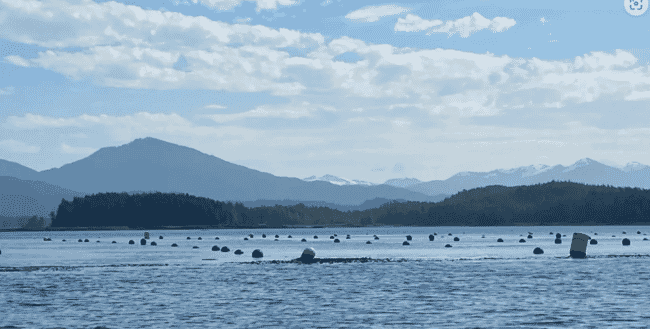
The project – involving Coastal Carbon, the Coastal First Nations Great Bear Initiative and Ocean Wise – will use AI and remote satellite data to scale a cost-effective model to measure where seaweed is and how much of it is there for better management and protection of these ecosystems, as well as carbon offset verification.
“This project is the first step in enabling Canada’s coastline, which happens to be the world’s largest, as a nature positive carbon sink – helping offset our emissions and restore our natural coastal ecosystems. Effective, scalable, remote monitoring is key to enabling carbon financing for this restoration. CICE is helping us take the very first step in BC, enabling us to build and expand our technology in one of the most productive and diverse coastlines in Canada,” said Thomas Storwick, co-founder and COO of Coastal Carbon, in a press release.
“Satellite monitoring technology has the potential to revolutionise seaweed restoration projects by providing highly accurate measurements and comprehensive mapping of biomass and canopy coverage. This advancement promises to significantly lower monitoring costs and enhance the precision of ecological assessments, facilitating more effective restoration efforts and improving ocean health,” added Scott Bohachyk, director of seaforestation at Ocean Wise.
The logic behind the investment
To meet 2050 net-zero targets, achieving breakthroughs in large-scale carbon removal is essential. Oceans, which have the capacity to store about 50 times more carbon dioxide than the atmosphere, are the world’s largest carbon dioxide sink. Ocean-based carbon dioxide removal (CDR) methods enhance the ocean’s natural ability to remove and store carbon dioxide. However, to scale these methods safely, further research, pilot projects, and innovation are necessary.
“Scientists estimate that we need to remove at least 10 gigatonnes of carbon dioxide annually by 2050, which is more than the annual production of oil and gas combined. Ocean-based carbon dioxide removal methods hold enormous potential, but their impact on coastal communities and marine ecosystems must be carefully studied. By investing in early-stage innovation and leveraging British Columbia’s leading research expertise, we aim to support the development of safe, effective, and responsible carbon removal methods," noted Sarah Goodman, president and CEO of CICE.CICE’s investment into ocean-based CDR was underpinned by a techno-economic analysis completed for a report called Catalyzing Carbon Dioxide Removal at Scale, which was released in February. The report identified that ocean alkalinity enhancement has 10 gigatonnes of global CDR absorption potential per year, more than any other existing CDR method. Based on the report findings, other focus areas for CICE include marine sensing technology, measurement, modelling, and data science.




